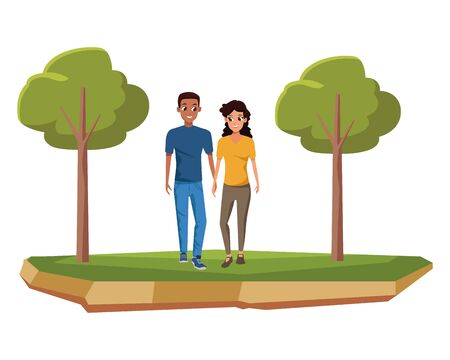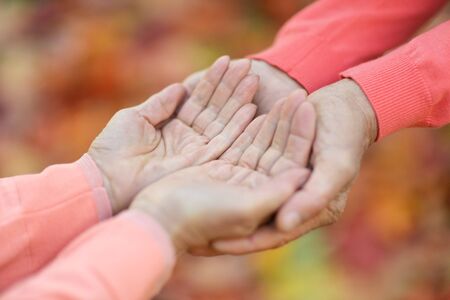Introduction to Cardiac Rehabilitation and Indian Joint Family System
Cardiac rehabilitation (CR) is a comprehensive, medically supervised program designed to improve the cardiovascular health of individuals recovering from heart-related events or procedures such as myocardial infarction, angioplasty, or cardiac surgery. The core components of CR include structured exercise training, patient education on heart-healthy living, counselling to reduce stress, and strategies for risk factor modification. In the Indian context, the support system surrounding the patient plays a pivotal role in the recovery journey. One such unique and culturally significant support structure is the Indian joint family system.
The Indian joint family typically comprises multiple generations living under one roof—grandparents, parents, children, uncles, aunts, and cousins form an extended household unit. This traditional familial arrangement is deeply rooted in Indian culture and values, emphasizing collective responsibility, emotional bonding, and mutual care. Despite urbanization and nuclear family trends in some regions, joint families remain prevalent across India, especially in semi-urban and rural areas. The presence of elders and close relatives provides a strong network of emotional, social, and practical support.
This intricate family framework not only shapes daily living but also significantly influences health behaviors and recovery processes during illness. In this article, we will explore how the Indian joint family system uniquely supports patients undergoing cardiac rehabilitation and why its cultural importance cannot be underestimated in clinical practice.
2. Psychosocial Support from Joint Families in Cardiac Recovery
In India, the joint family system plays a pivotal role in providing psychosocial support to patients undergoing cardiac rehabilitation. Unlike nuclear families, joint families consist of multiple generations living together under one roof, allowing for a robust network of emotional comfort, motivation, and shared responsibilities. This collective caregiving approach is deeply rooted in Indian culture and offers several unique benefits during the recovery phase after a cardiac event.
Emotional Comfort through Togetherness
Emotional well-being is crucial for cardiac patients, as stress and anxiety can hinder recovery. In joint families, elders often share wisdom and positive anecdotes that instil hope and reduce fear. The presence of close relatives—whether parents, siblings, or cousins—creates a supportive environment where patients feel valued and less isolated. Family rituals such as evening prayers or group meals further foster a sense of belonging and security.
Motivation Through Collective Encouragement
Joint families excel at providing daily motivation. Relatives remind the patient to adhere to prescribed exercise routines and medication schedules, making compliance easier. When one member feels low, others step in with encouragement, ensuring the patient remains committed to their rehabilitation goals. This shared responsibility reduces the risk of neglect or missed appointments.
Resilience Built on Shared Responsibilities
The distribution of household duties among multiple family members ensures that no single caregiver is overburdened. This structure not only prevents caregiver burnout but also allows the patient to focus solely on recovery. For example, while one relative manages dietary requirements as per the doctors advice, another may accompany the patient for regular hospital visits or physiotherapy sessions.
| Aspect of Support | Role of Joint Family | Cultural Example |
|---|---|---|
| Emotional Comfort | Continuous presence and reassurance | Elders narrating success stories after illness |
| Motivation | Daily reminders for exercise/medication | Younger members joining morning walks with patient |
| Resilience | Duties shared among multiple caregivers | Aunts preparing heart-healthy meals; cousins assisting with hospital visits |
This holistic psychosocial support system not only accelerates physical healing but also strengthens mental resilience. By nurturing the patient through collective caregiving and shared cultural values, Indian joint families form an integral backbone in successful cardiac rehabilitation journeys.

3. Practical Assistance in Daily Living and Medication Adherence
Within the Indian joint family system, practical support forms the backbone of effective cardiac rehabilitation. Family members, spanning multiple generations, often come together to shoulder the responsibility of managing the patient’s daily needs. This collective approach is deeply rooted in Indian culture, where caring for elders and unwell relatives is both a moral duty and a cherished tradition. The presence of attentive caregivers at home ensures that cardiac patients follow prescribed routines with greater ease and consistency.
Managing Daily Routines
In India, it is common for family members to coordinate daily activities such as bathing, dressing, and mobility assistance for cardiac patients. Elderly parents or those recovering from cardiac events rarely have to manage these tasks alone. Young adults or even grandchildren willingly step in to assist, ensuring that physical activity is balanced with adequate rest—both crucial components of cardiac rehabilitation. By organizing household chores and sharing caregiving responsibilities, the joint family reduces stress on the patient and encourages adherence to recommended lifestyle modifications.
Medication Schedules
Adhering to complex medication regimens can be challenging for many cardiac patients. In the Indian joint family setup, siblings, spouses, or children often take charge of monitoring medicine intake. It is common practice for a responsible member to remind or physically hand over medicines at the right time, track prescriptions, and ensure refills are procured without delay. This communal vigilance significantly lowers the risk of missed doses and enhances therapeutic outcomes.
Dietary Modifications
Diet plays a pivotal role in cardiac recovery and prevention of further complications. Indian families typically eat together, allowing dietary changes to be implemented uniformly across the household. Family cooks adapt traditional recipes to include less oil, salt, and sugar while incorporating heart-healthy ingredients like whole grains, lentils, and fresh vegetables. Furthermore, older women in the family often lead by example in preparing special meals that cater to the patient’s nutritional needs while maintaining authentic flavours—a gesture that fosters both compliance and emotional well-being.
The Cultural Advantage
This hands-on involvement not only supports the practical aspects of recovery but also creates an environment where patients feel cared for and motivated. The Indian joint family’s integrated approach bridges gaps in professional healthcare delivery by offering round-the-clock supervision and encouragement—an invaluable asset in promoting successful cardiac rehabilitation outcomes.
4. Facilitating Home-based Cardiac Rehabilitation Activities
The Indian joint family system plays a pivotal role in supporting cardiac rehabilitation, particularly when it comes to home-based activities. In most Indian households, the presence of multiple generations creates a unique environment where patients receive both emotional and practical support. Family members not only encourage adherence to prescribed exercise routines but also actively participate alongside the patient, transforming rehabilitation from an individual responsibility into a shared family activity.
Encouragement and Participation in Exercise Routines
Joint families provide motivation through collective participation. When elders or younger family members join in simple exercises like walking or yoga, it fosters a sense of unity and reduces the psychological burden on the patient. This active involvement ensures that prescribed routines are followed more consistently and with greater enthusiasm.
Monitoring Progress and Accountability
Family members play a vital role in monitoring the patients progress. In Indian culture, relatives are accustomed to checking on each other’s well-being regularly. They can keep a log of daily activities, check vital signs as instructed by healthcare professionals, and offer reminders for medication and exercise sessions. The table below demonstrates typical roles assigned within a joint family to support cardiac rehabilitation at home:
| Family Member | Role in Rehabilitation |
|---|---|
| Spouse | Accompanies during exercise, prepares heart-healthy meals |
| Children | Motivates with games and walks, tracks progress charts |
| Elderly Parents | Shares wisdom, provides emotional support |
| Siblings/Relatives | Assists with appointments, helps maintain routine |
Fostering Commitment to Rehabilitation
The collective nature of an Indian joint family instills discipline and regularity in daily life. By making rehabilitation activities part of the familys routine—such as dedicating time for group walks or incorporating relaxation practices like pranayama—families foster long-term commitment to recovery. Regular discussions about progress and challenges during family gatherings further reinforce the importance of adhering to the rehabilitation plan.
Cultural Sensitivity in Support Systems
The nurturing environment provided by joint families aligns well with Indian cultural values of care, respect, and interdependence. This culturally sensitive approach significantly enhances both the physical and psychological outcomes of cardiac rehabilitation at home.
5. Cultural Beliefs, Traditional Practices, and Challenges
Influence of Indian Cultural Values on Cardiac Rehabilitation
Indian society is deeply rooted in cultural values that prioritize family cohesion, respect for elders, and collective decision-making. In the context of cardiac rehabilitation, these values can be both beneficial and challenging. The Indian joint family system often ensures that patients are never alone in their recovery journey; there is always someone to provide moral support, encouragement, and practical assistance with daily activities. At the same time, the tendency to defer health-related decisions to elders or family consensus may sometimes delay timely medical interventions or adherence to prescribed rehabilitation protocols.
Religious Beliefs as a Source of Strength
Religion plays a central role in many Indian households. Faith in divine intervention and regular spiritual practices such as prayer, meditation, or visits to places of worship can provide patients with emotional resilience during the cardiac rehabilitation process. Many families incorporate rituals like lighting a diya (lamp) or reciting mantras for the patients well-being, which reinforces hope and positivity. However, strict fasting traditions or dietary restrictions observed for religious reasons may conflict with medically recommended nutrition plans for cardiac patients.
Traditional Practices: Ayurveda and Home Remedies
The use of Ayurveda and traditional home remedies remains prevalent in Indian families. Some members may encourage the consumption of herbal concoctions or specific foods believed to promote heart health. While some of these practices can complement medical care by reducing stress or improving overall wellness, others might interfere with prescribed medications or delay acceptance of modern rehabilitation techniques.
Challenges: Stigma and Misconceptions
Cultural misconceptions about heart disease—such as viewing it as a sign of weakness or fearing social stigma—can lead to denial and underreporting of symptoms within families. Patients may avoid discussing their condition openly, leading to inadequate support or missed follow-up appointments. Additionally, traditional gender roles may result in female patients receiving less attention during rehabilitation due to prioritization of household responsibilities.
Navigating Cultural Sensitivities in Cardiac Care
Healthcare professionals working in India must remain sensitive to these cultural nuances while educating families about evidence-based cardiac rehabilitation. Tailoring rehabilitation programs to respect religious practices, incorporating culturally familiar physical activities like yoga, and engaging family members as active participants can bridge gaps between tradition and modern medicine. Ultimately, understanding and addressing both supportive elements and challenges within Indian culture is crucial for optimizing patient outcomes in cardiac rehabilitation.
6. Optimising the Joint Family’s Role for Better Cardiac Outcomes
Harnessing the Power of Indian Joint Families in Cardiac Rehabilitation
The Indian joint family, deeply rooted in tradition and culture, can serve as a powerful ally in cardiac rehabilitation. Healthcare professionals should actively encourage family involvement at every stage of recovery, recognising that the collective support system can enhance patient motivation, emotional well-being, and adherence to prescribed regimens.
Culturally Appropriate Interventions
Cardiac rehabilitation programmes should be tailored to align with Indian values and familial practices. This includes organising education sessions for both patients and family members in local languages or dialects, using culturally relevant analogies and examples to explain complex medical concepts. Traditional Indian diets can be modified rather than replaced, respecting culinary preferences while promoting heart-healthy choices. Group activities such as family walks or yoga sessions led by physiotherapists can also foster unity while reinforcing exercise routines.
Effective Communication Strategies
Healthcare providers must use inclusive communication approaches, addressing not only the patient but also key family decision-makers such as elders or spouses. Open discussions about treatment plans and lifestyle modifications should be encouraged, ensuring all family members understand their roles in supporting recovery. Using storytelling or relatable case examples from within the community can help break down resistance to change and build trust in the rehabilitation process.
Recommendations for Healthcare Professionals
- Conduct regular family meetings during hospital stays and follow-up visits to discuss progress and address concerns.
- Provide written and visual educational materials in regional languages for better comprehension among older or less literate family members.
- Encourage formation of peer support groups where families can share experiences and strategies for overcoming challenges.
- Respect cultural sensitivities regarding gender roles and privacy while designing exercise and dietary interventions.
- Empower female family members, who often manage household meals, with practical tips on preparing heart-healthy traditional foods.
By leveraging the unique strengths of the Indian joint family through culturally informed care and collaborative communication, healthcare professionals can significantly improve cardiac rehabilitation outcomes and foster sustainable lifestyle changes for their patients.

